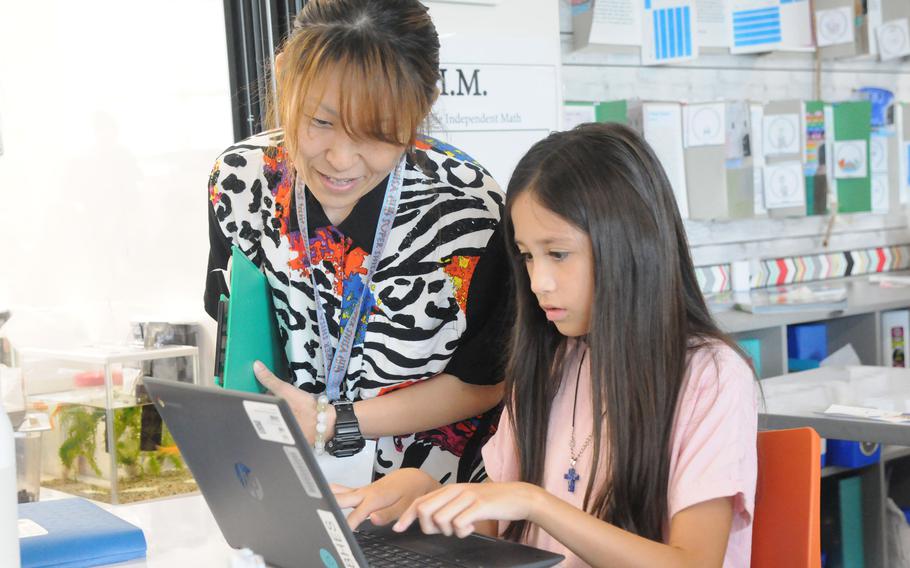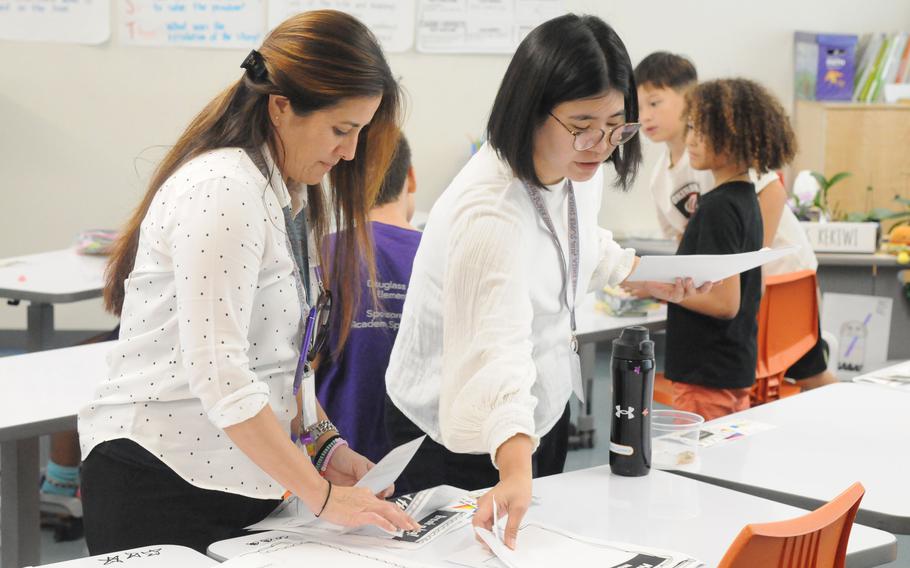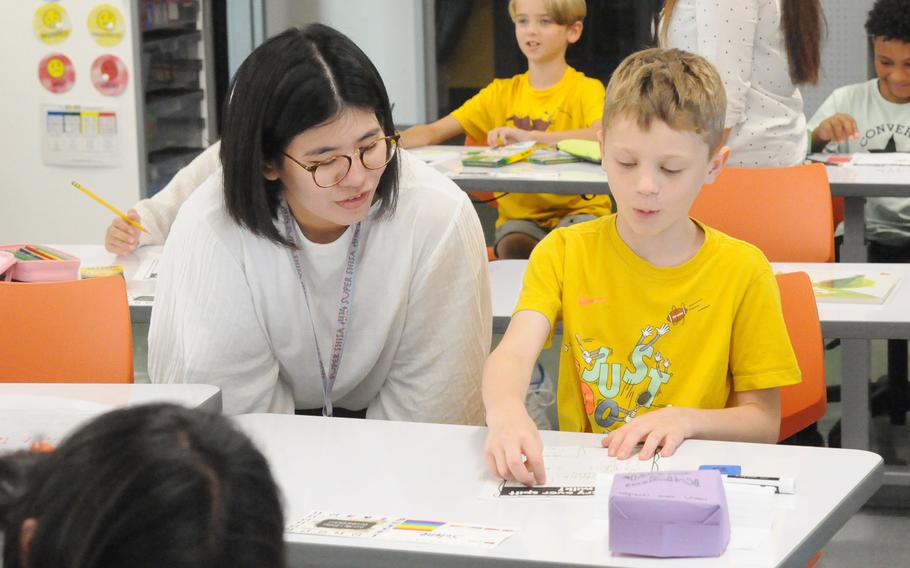Asia-Pacific
Japanese educators sample DODEA schools’ co-teaching methods on Okinawa
Stars and Stripes November 7, 2024

Oyama Elementary School teacher Sakura Abe helps a fourth-grader at Bob Hope Elementary School on Kadena Air Base, Okinawa, on Oct. 30, 2024. (Keishi Koja/Stars and Stripes)
KADENA AIR BASE, Okinawa — Japanese educators from elementary schools in Ginowan city recently visited the home of the 18th Wing to receive a crash-course in a new method of teaching.
They were at Bob Hope Elementary on Oct. 30 to learn about the co-teaching models used by the Department of Defense Education Activity, in which educators team up to plan and coordinate lessons before delivering them together in the classroom.
Co-teaching is used across all grade levels in DODEA, spokeswoman Miranda Ferguson told Stars and Stripes in an email Tuesday.
Four Japanese educators worked with Bob Hope’s five fourth-grade teachers as students rotated through their classrooms. Each classroom featured a different activity, such as poster-making and bookmaking, related to the day’s topic, idioms.
As students worked, the Japanese and American educators walked around each classroom, stopping occasionally to help a student with a question. At one point, a teacher pulled a group of students from the main classroom to work together on a project.

Bob Hope Elementary School fourth-grade teacher Tameko Kekiwi, left, works with Futenma Daini Elementary School teacher Kotono Arasaki to prepare a lesson at her school on Kadena Air Base, Okinawa, on Oct. 30, 2024. (Keishi Koja/Stars and Stripes)
“Say a child is there and they’re not sure what to do, we might pull a kid or two over to a table and then be like, ‘OK, let’s work together on this,’ ” Bob Hope fourth-grade teacher Sara Wood told Stars and Stripes during a break in activities.
Five other Japanese educators worked upstairs with the school’s fifth-grade teachers.
There are multiple models for co-teaching. In elementary schools, it’s common for teachers within each grade to co-plan lessons — or in the case of the exchange, work with the Japanese educators to plan the lesson.
“We bring in specialists, too, like the math support and reading, our multi-language teachers, our gifted teachers, [special education],” Wood said. “… But mainly it’s the five teachers that co-plan together. We teach the same ideas in very similar ways.”
The idea for the exchange came in the spring through conversations between Bob Hope principal Kristopher Kwiatek and Japan’s Ministry of Foreign Affairs, Wood said.
“We’ve done a lot of cultural events in the past with students — Japanese students and American students — getting together and learning about their school and activities,” she said. “But we’ve never done something with teachers learning from each other.”

Futenma Daini Elementary School teacher Kotono Arasaki works with a fourth-grader at Bob Hope Elementary School on Kadena Air Base, Okinawa, on Oct. 30, 2024. (Keishi Koja/Stars and Stripes)
In January, Bob Hope’s fourth- and fifth-grade teachers will visit Shimashi Elementary School in Ginowan to learn how Japanese classrooms are run.
“We’ve been able to still have a lot of really meaningful conversations about what our teaching looks like and what their teaching looks like,” Wood said.
Fourth-grader Maryanne Dyer said she enjoys the co-teaching model that was shown to the Japanese teachers.
“It’s really big so you have more people to work with,” she said. “You can also experience two different types of learning because they’re two different types of teachers. So that if I don’t understand something, and then the other teacher explains it a bit better than the other, then I can understand it a bit more.”
Sakura Abe, a language teacher at Oyama Elementary School, said she hopes to have more cultural exchanges between the local and DODEA schools.
“I want to invite the military people and military families and American school kids to my school,” she said. “But I don’t know why the board of education in Japan and my school — sometimes I ask them, but they say it’s so hard to do.”